Introduction: In this article, Gena Philibert-Ortega searches old newspapers to learn more about the tragic sinking of the passenger ship Lusitania by a German submarine, an act which almost propelled the neutral U.S. into World War I. Gena is a genealogist and author of the book “From the Family Kitchen.”
First launched in 1906, the RMS Lusitania was part of the British Cunard line of luxury passenger ships. For a short time, the Lusitania was the fastest ship in the world, with such amenities as electric lights and the wireless telegraph. On 1 May 1915, with World War I raging in Europe, the Lusitania set sail from New York to Liverpool, England, filled with passengers.
Warning Issued before Lusitania Departed
But – most likely unknown to most of those passengers – the Lusitania was also carrying supplies and ammunition for the British war effort. After 101 roundtrip crossings, this journey may not have seemed too different from the previous ones – except for a warning directed to all those on board. However, this crossing will forever remain different in the annals of history – for the Germans sank the Lusitania on 7 May 1915, nearly drawing the neutral U.S. into WWI.
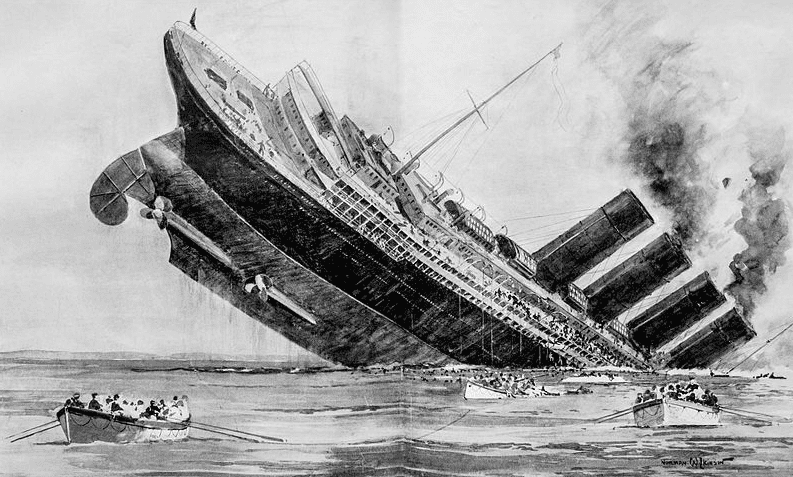
New York newspapers had carried a warning from the German embassy alerting potential Lusitania passengers that sailing through a war zone under the flags of Great Britain or its allies could mean possible destruction of the ship. Civilian passengers on board would be traveling at their own risk. Perhaps those who purchased passage on the Lusitania thought the warning was an idle threat, figuring that civilians could simply not be in danger from military actions.
According to this South Dakota newspaper article about the German warning: “Not a single passenger cancelled his sailings.” While the old newspaper article reports that the U.S. State Department took the warning seriously, it goes on to say that: “The Cunarder [sic] officials laughed at the passengers’ fears.” Referring to the speed of the ship, the officials stated that: “the Lusitania could show her heels to any submarine.”
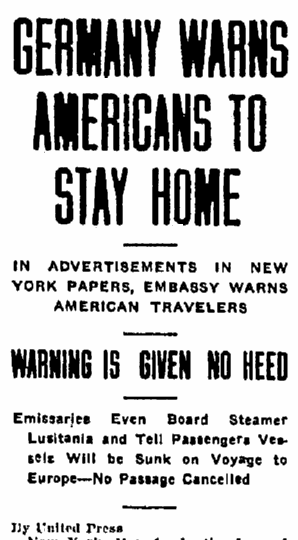
The Sinking of the Lusitania
Six days after departing from New York, on May 7th off the coast of Ireland, a German submarine U-20 under the command of Walther Schweiger fired a torpedo at the Lusitania.
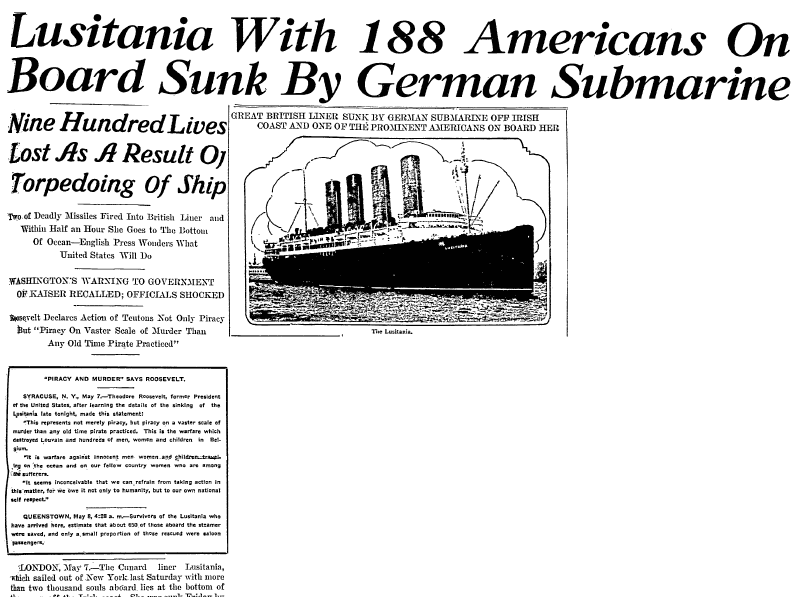
Unlike the Titanic disaster just three years prior, the Lusitania sank very quickly in only 18 minutes – not enough time for her nearly 2,000 passengers to climb safely into lifeboats. Only 767 of the 1,960 people aboard survived. The torpedoed ship tragedy took the lives of approximately 128 out of 139 Americans on board. Only 37.7% of passengers survived the sinking, leaving a large number of women and children among the dead.* A list and biographies of the passengers and crew aboard the Lusitania can be found on The Lusitania Resource website.
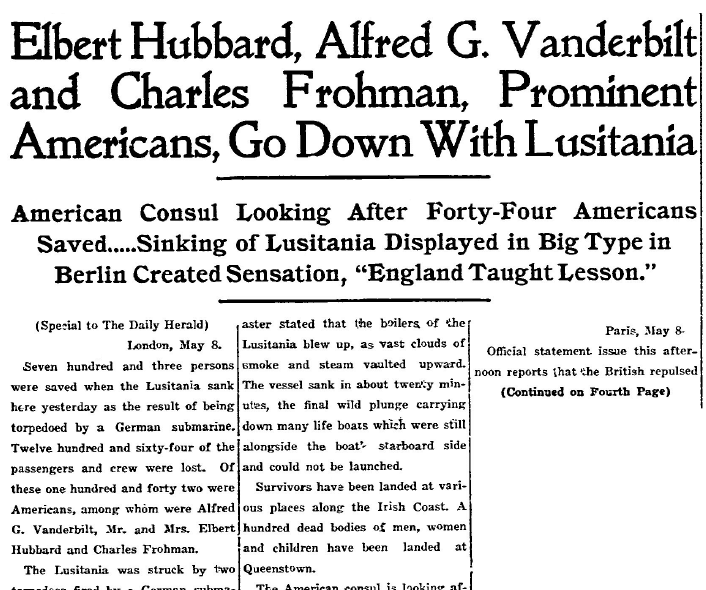
One of those who perished was American genealogist Lothrop Withington, who was returning to England on the Lusitania to continue researching a 17th century registry of wills.
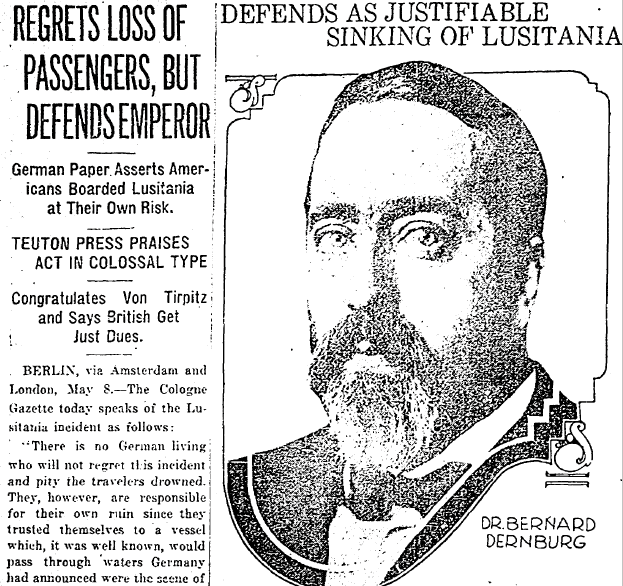
Sinking Almost Draws U.S. into WWI
After pressure from President Woodrow Wilson, Germany promised to only sink passenger ships after proper warning and safeguards for passengers. English, Irish and eventually U.S. propaganda posters evoked the needless drowning of women and children to encourage or guilt men into joining the military.
Here’s an example of such a recruitment poster, showing a heartbreaking scene of a woman Lusitania passenger drowning with her infant child.

While England was hoping this tragedy would bring the United States into the war, it would be another two years before President Wilson decided to send Americans to fight. Wilson had won a second presidential term running with the slogan “He kept us out of war.” This slogan didn’t resonate with everyone, as this political commentary shows. Among its many grievances, this editorial includes anger over the sinking of the Lusitania.
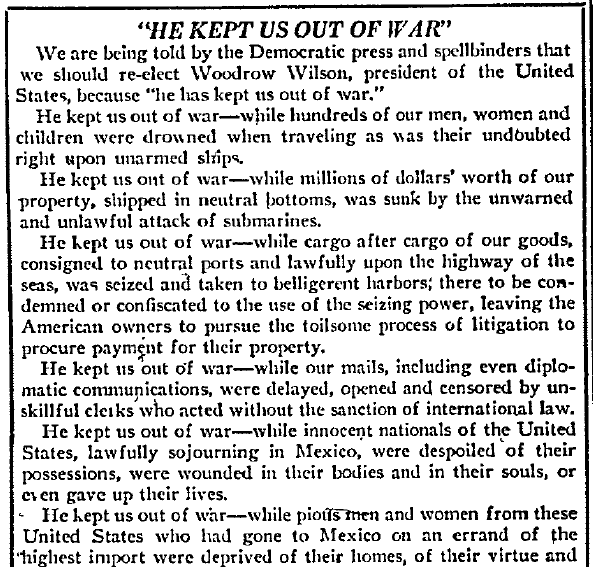
After events like the sinking of the Lusitania and the intercepted Zimmerman Telegram, which revealed that Germany offered U.S. territory to Mexico in return for assisting Germany in the war effort, the United States finally entered the war on 6 April 1917.
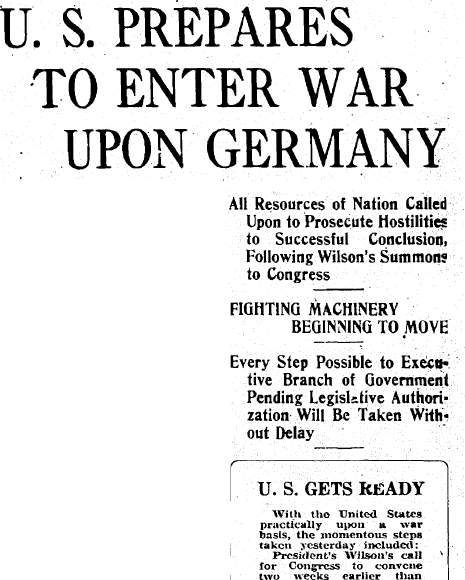
Were any of your ancestors on board the Lusitania when it was sunk by a German submarine? If so, please tell us about it in the comments section
———————
* Passenger and Crew Statistics. The Lusitania Resource. http://www.rmslusitania.info/people/statistics/. Accessed 5 May 2015.
Related Articles:
